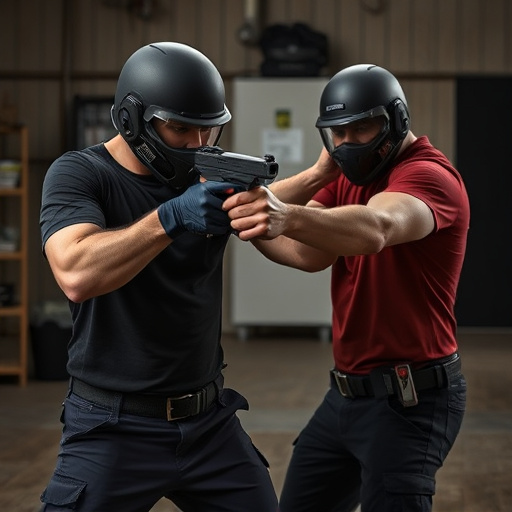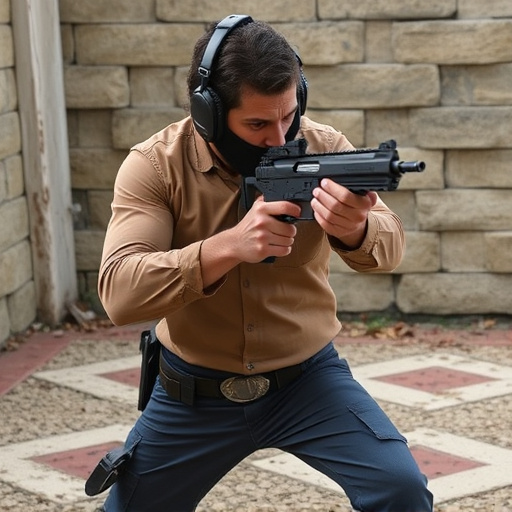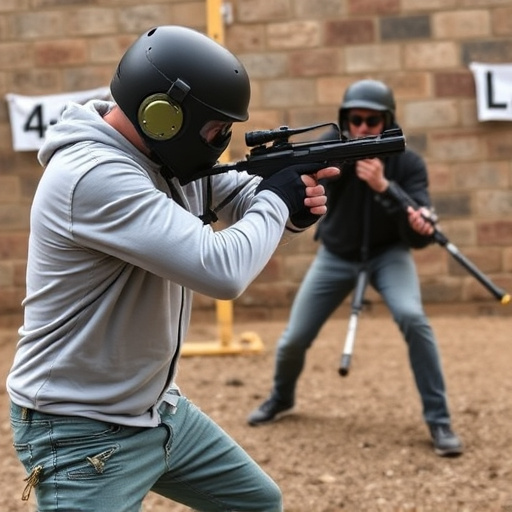Police-grade stun guns, known as Conductivity Enforcement Devices (CEDs), are advanced tactical tools using electrical energy for non-lethal incapacitation. With varying designs and specifications, they cater to diverse police needs from close-quarters combat to crowd control. These devices offer high voltage outputs (50,000-120,000 volts), multiple shooting modes, durable construction, and some even include LED flashlights. Compared to consumer models, police-grade stun guns excel in performance, reliability, safety features, and durability for rigorous use in harsh environments. When exploring Police Grade Stun Gun Options, their superior capabilities make them indispensable tools for law enforcement officers.
Exploring the differences between Tasers and stun guns is crucial for understanding personal defense tools. While both utilize electrical current to incapacitate, their design and functionality diverge significantly. This article breaks down these distinctions, focusing on key aspects like design, power, range, and police-grade options. Discover unique features of stun guns and the varying capabilities of Tasers, highlighting the importance of choosing the right self-defense tool based on specific needs, especially considering available Police Grade Stun Gun Options.
- Understanding Tasers: Design and Functionality
- Stun Guns: Features and Variations
- Police Grade Options: Key Differences and Considerations
Understanding Tasers: Design and Functionality

Tasers, officially known as Conductivity Enforcement Devices (CEDs), are non-lethal weapons designed to temporarily incapacitate individuals through electrical pulses. They fire two small probes connected to high-voltage, low-current electrical circuits, disrupting muscular control and causing a powerful jolt of pain and temporary paralysis. Tasers come in various forms, but their core design involves a trigger mechanism that fires the probes and a power source that delivers the electric charge.
When discussing Police Grade Stun Guns, understanding Taser technology is crucial. These stun guns operate on similar principles, using electrical energy to override an individual’s motor functions. However, they differ in form factors, power outputs, and safety features, catering to different tactical needs. The market offers a range of options, from compact models suitable for close-quarters combat to more powerful devices designed for crowd control or resisting aggressive assailants, providing law enforcement with versatile tools to handle diverse situations effectively.
Stun Guns: Features and Variations

Stun guns, also known as electronic control devices (ECDs), are non-lethal weapons designed to temporarily incapacitate a target through electric current. They have become popular among civilians for personal protection and law enforcement agencies for crowd control and subduing resistant individuals. Stun guns come in various forms, but they all share the common goal of delivering a powerful electric shock to disrupt muscle control, causing the target to fall to the ground momentarily.
Police-grade stun gun options offer advanced features such as high voltage outputs (typically between 50,000 and 120,000 volts), multiple shooting modes (e.g., single shot, burst mode), and durable construction for rugged use. Some models also incorporate LED flashlights for better visibility during low-light conditions or tactical situations. These variations cater to different user needs, ensuring effectiveness in various scenarios, from self-defense to law enforcement operations.
Police Grade Options: Key Differences and Considerations

When considering police-grade stun guns, several key differences and considerations set them apart from consumer models. These professional-level devices are designed to meet stringent performance and reliability standards, making them indispensable tools for law enforcement officers. One of the primary distinctions lies in power output; police-grade options typically offer higher voltage and current levels, ensuring effective immobilization during critical situations.
Additionally, these stun guns often incorporate advanced safety mechanisms such as digital controls and automated shutdown features, which are absent from many civilian models. Durability is another critical factor, with police-grade devices built to withstand rigorous use and harsh environments. Features like impact resistance, waterproofing, and robust construction materials contribute to their longevity, making them reliable tools for officers in the field.
When comparing tasers and stun guns, understanding their distinct features is crucial for making an informed choice. Tasers, with their unique design and non-lethal force, have become iconic in law enforcement. Meanwhile, stun guns offer a range of variations and power levels, catering to personal defense needs. For those seeking police-grade options, considering factors like voltage, range, and durability is essential. Ultimately, the choice between these tools depends on individual requirements and local regulations, ensuring individuals are equipped with the most suitable self-defense solution.
